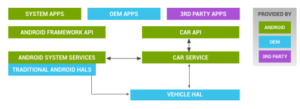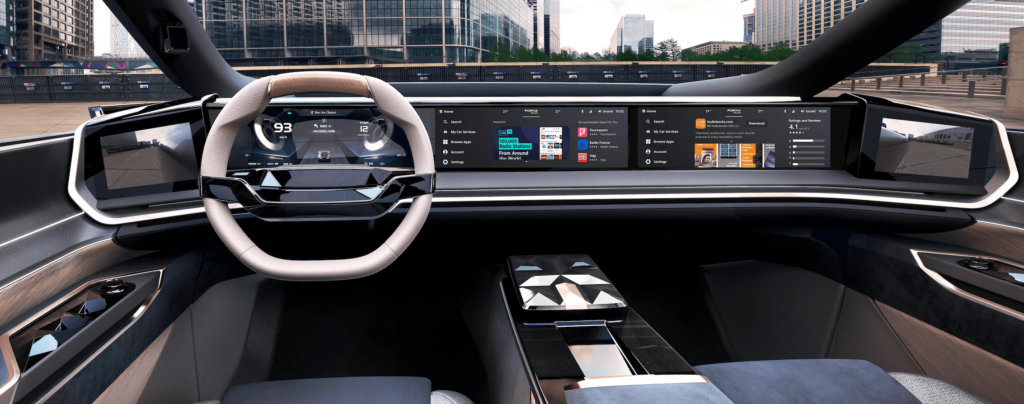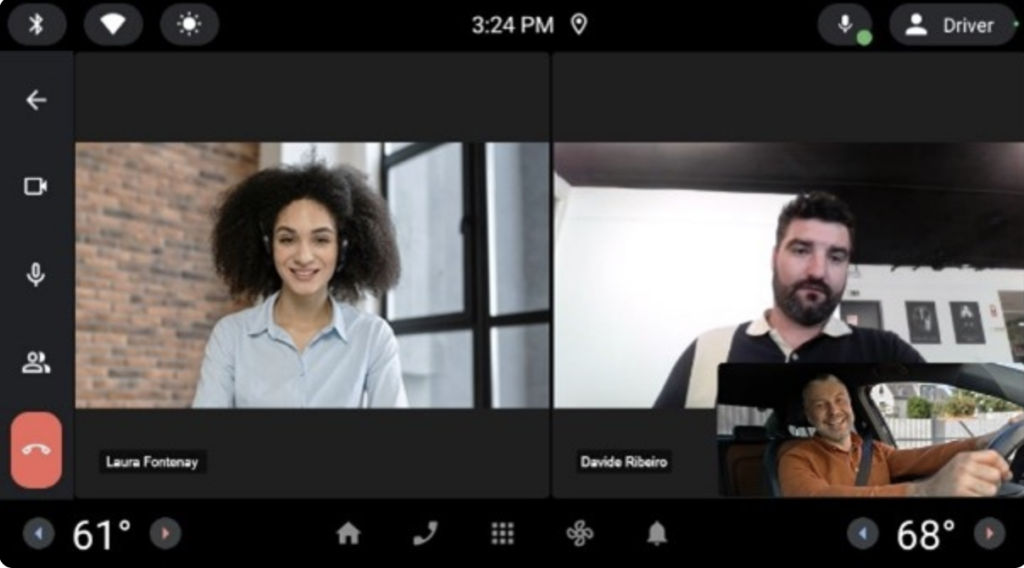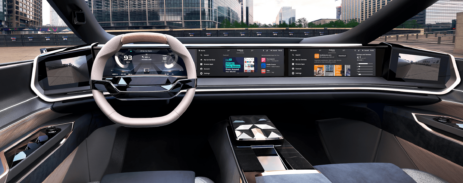As the automotive industry becomes more competitive, automakers are increasingly turning to technology to give them an edge. Top and mid-range brands alike are investing in advanced car application programming interface (API) systems that allow them to create unique user experiences and offer new services to customers.
According to research, software accounts for 90% of innovations in the automotive industry. This is why many carmakers are now turning to APIs to gain access to valuable data and the functionality they need to develop new software-based features and services.
However, the development of innovation in mobility cannot be left only to carmakers. For the space to keep moving forward, it must also be open to third-party developers who wish to improve vehicle owners’ driving experience.
Due to a lack of standardized resources many mobility companies are compelled to build and maintain multiple connections using various APIs to meet their target audiences’ needs. Despite the strain it puts on overhead expenses, others are compelled to use hardware equipment to access vehicle data.
Car APIs can bridge this gap and allow mobility companies to speed up market readiness, build apps on an agile infrastructure, and improve customer engagement. This is because each vehicle can contain several data points, such as part numbers, manufacturing information, and vehicle identification numbers (VINs) — and Car APIs can allow developers to tap into a range of automobile data.
By gathering information from an automotive API, developers can work on developing apps that address a wide range of concerns for vehicle owners.
What Is a Car API?
Firstly, defining an API would help us understand what the Car API is. An API (Application Programming Interface) defines in which way two software components can communicate with each other. Here, the required instructions are defined so developers can communicate with a server or even hardware. One of the important aspects in an API is HAL, Hardware Abstraction Layer. This component will define what will be included in a specific API.
So the Car API is a set of programming instructions that allow the software to interact with a vehicle’s systems. It acts as a middleman between the car’s hardware and third-party applications.
Exactly as written in the previous paragraph, one of the main components in this structure is the HAL. In the automotive environment this layer is named Vehicle HAL. Here automotive vendors can define what will be included in the Car API and in which way 3rd party apps can access vehicle properties. Carmakers can choose to open up their vehicles’ data to external developers or keep it internal.

This allows the mobility sector to diversify traditional services and innovate on customer-driven features, like peer-to-peer car sharing.
How Does a Car API Work?
Car API documentation is like a cookbook for software developers. It contains all the information they need to write code that will work with a car. The documentation will list the different commands the API can execute, as well as what data is available for each command.
How Can Developers Use Car API?
Car API data can be used by developers to create various apps and services. If you plan on integrating Android Automotive templates into your app, for example, then you’ll need to include Car API in your app.
If you plan to implement Android’s Driving Distraction Optimizations, you also need access to the Car API. This will allow your app to display information in a way that minimizes distractions for the driver.
Other possible app ideas that could benefit from Car API data include:
- A parking spot finder that uses a car’s location to direct the driver to the nearest open space;
- An electric vehicle (EV) charge station locator that helps plan the most efficient route based on a car’s battery level;
- A tire pressure monitoring system that sends alerts to the driver’s phone when the car’s tires are low;
- A driving pattern tracker that provides feedback to help the driver become more fuel-efficient.
These are just some ideas. There are many more possibilities for what Car API data can do for both automakers and third-party developers.
How Will Car APIs Integrate With Vehicles?
Integrating mobility software with vehicles that have an API eliminates the need for gadgets connected to a vehicle’s onboard diagnostics port. However, having no hardware component does not imply that the data derived is less accurate or valuable.
Car API serves as a middleware that allows developers to connect to vehicle properties, including hardware parts. As such, third-party applications cannot access these hardware parts without a Car API.
In addition, the data collected by a Car API can be used to create valuable insights that can help improve the efficiency of both automakers and third-party developers.
There are also several benefits to integrating with APIs over hardware devices, including:
- There’s no need for complex technical assistance for vehicle owners installing hardware equipment themselves;
- The ability to pull accurate data from a broad range of vehicles;
- Providing end-users with better overall experiences.
Car APIs and Mobility-as-a-Service
The integration of various types of transport services into a mobility service that can be accessed on-demand is known as Mobility-as-a-Service (MaaS). The examples we discussed are just a few of the many ways MaaS is revolutionizing how consumers interact with automobiles and transportation.
According to market research, the MaaS market is expected to grow from $3.3 billion in 2021 to $40.1 billion by 2030. This growth is driven by the increasing adoption of connected and autonomous vehicles (CAVs), and the rising need for on-demand transportation services.
Car API is a key enabler of MaaS. It allows developers to create new types of applications and services that can be integrated into a MaaS platform. The growth of software integration via APIs makes it easier for businesses to crossover across industries, such as automotive, health, technology, entertainment, and more.
Powerful integrations also give consumers more options and flexibility when it comes to planning their journeys. It also helps reduce traffic congestion and pollution levels, as well as the number of accidents on roads.
Today, the integration of software and technology through a Car API is assisting businesses in various ways:
- Strengthening and diversifying current revenue streams: Many businesses are looking for new ways to generate revenue. Car API provides the ability to develop and integrate new services offered to customers, such as in-car entertainment, e-commerce, and more;
- Improving operational efficiency: The real-time data collected by Car API can be used to improve business processes and make better decisions. For instance, the data can be used to optimize fleet management, route planning, and maintenance schedule;
- Creating new business opportunities: Car API allows businesses the opportunity to develop entirely new products and services. These could include pay-per-mile insurance, parking space reservation, and more.
Car API: From An Expert’s Perspective
Our team got to speak with Snapp Automotive’s co-founder and CTO, Al Sutton. Having worked in tier-1 tech companies such as Facebook and Google, his perspective is highly valuable when it comes to the car industry and how new technologies are disrupting it.
He also has extensive experience delivering Android-based products to market and has mentored engineers and product teams in the past.
Q&A With Al Sutton, Snapp Automotive’s CTO and Co-Founder
Sutton shared his thoughts with us regarding Car API, Android Automotive OS, and the future of the connected automotive environment. Below, you’ll find valuable insights for anyone planning to enter the automotive market or build an app for cars. He also shared his opinion on some of the points discussed in this article.
Q: What is the role of Car API in Android Automotive OS?
A: The main difference between Android Auto and Android Automotive OS in an Android-supported system is where the app templates are run. With Android Auto, they’re running on the phone and projected to the car’s head unit.
In Android Automotive OS, they’re running on the head unit itself. Car API gives developers a standardized way of interacting with the car, so they don’t need to be concerned about whether their app runs inside an Auto or Automotive OS environment.
Q: In your professional opinion, what does Car API represent in the new era of in-car connectivity? What opportunities come up for app developers with Car API?
A: With Car API, it’s the first time developers have had a standardized way of interacting with vehicles. Before the library, each car running on Android could use a different way of interacting with it, and developers would need to support each method. With the library, developers can now write code just once, knowing it’s compatible with current and future cars.
Q: How does Car API relate to Driver Distraction Guidelines?
A: Car API supports Google’s templating system, which allows Android Automotive OS to set boundaries on what apps can do, and so ensure that apps are not doing things that may distract the driver (e.g. requiring frequent interaction from the driver while driving).
Q: From the various use cases that exist of apps that work with Car API, can you tell us one that stands out to you and why?
A: Navigation is the one that stands out for me because there are so many things you can do with it. It can be used to support community efforts to provide local facilities (e.g., finding local free EV chargers), and soon it will be able to support live updates allowing folks to get information on the move allowing for route alterations and changes to the journey.
Q: What do you think is next for Android Automotive OS? And how do you think Car API figures into that future?
A: I can see Android Automotive OS spreading to more vehicle types which will open up the possibility for more templates. These developments are not possible in forklift trucks and warehouse navigation systems currently, but soon it will be something that developers can create.
The Future of Car API
As the automotive industry continues to evolve, Car API will become an increasingly important part of the ecosystem. Automakers are already beginning to see the benefits of using APIs to open up their vehicles to third-party developers.
In the future, we will see more automakers offering Car API to attract new customers and create new revenue streams. In addition, we will also see an increase in the number of third-party developers creating innovative new applications and services that can be integrated into existing MaaS platforms.




